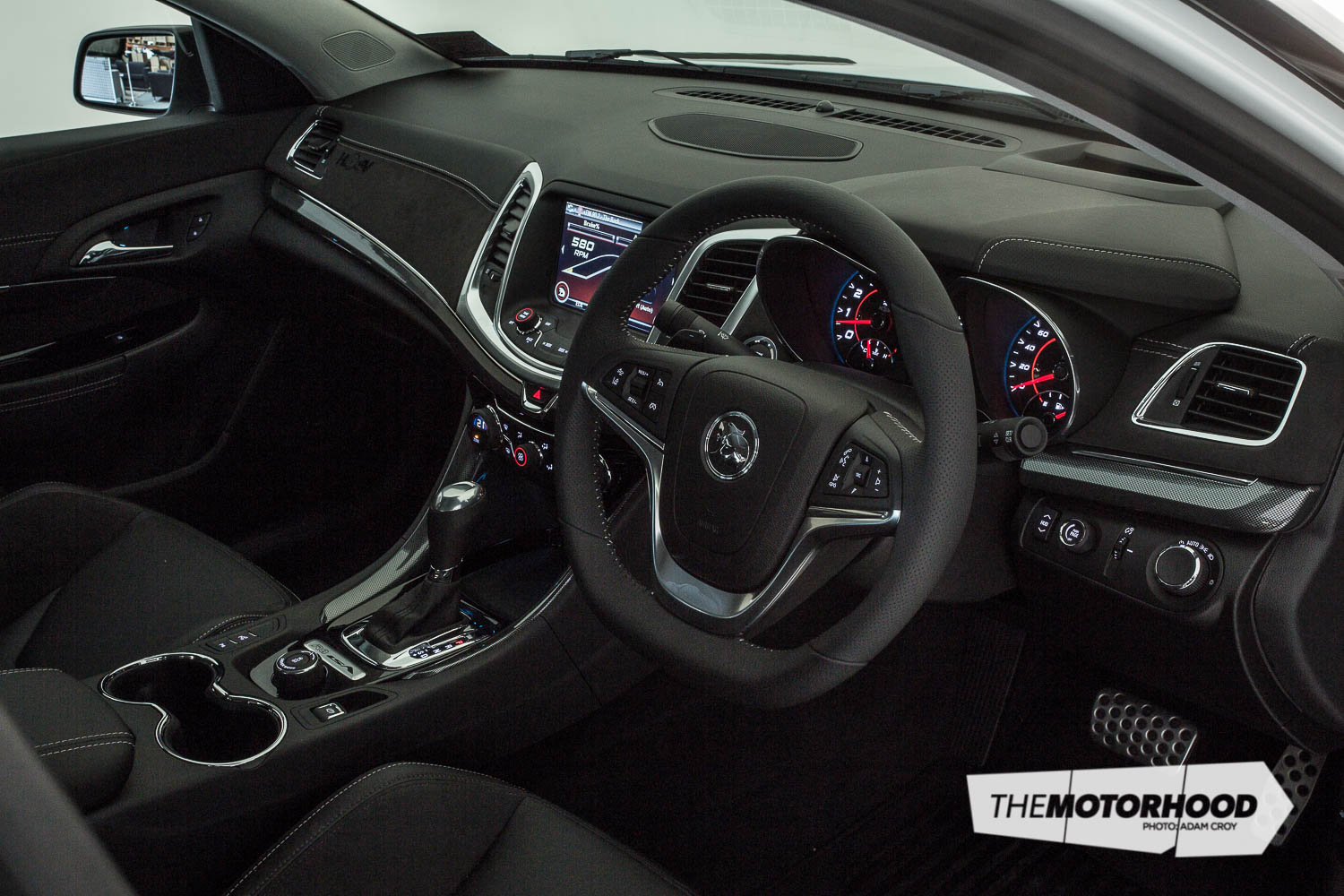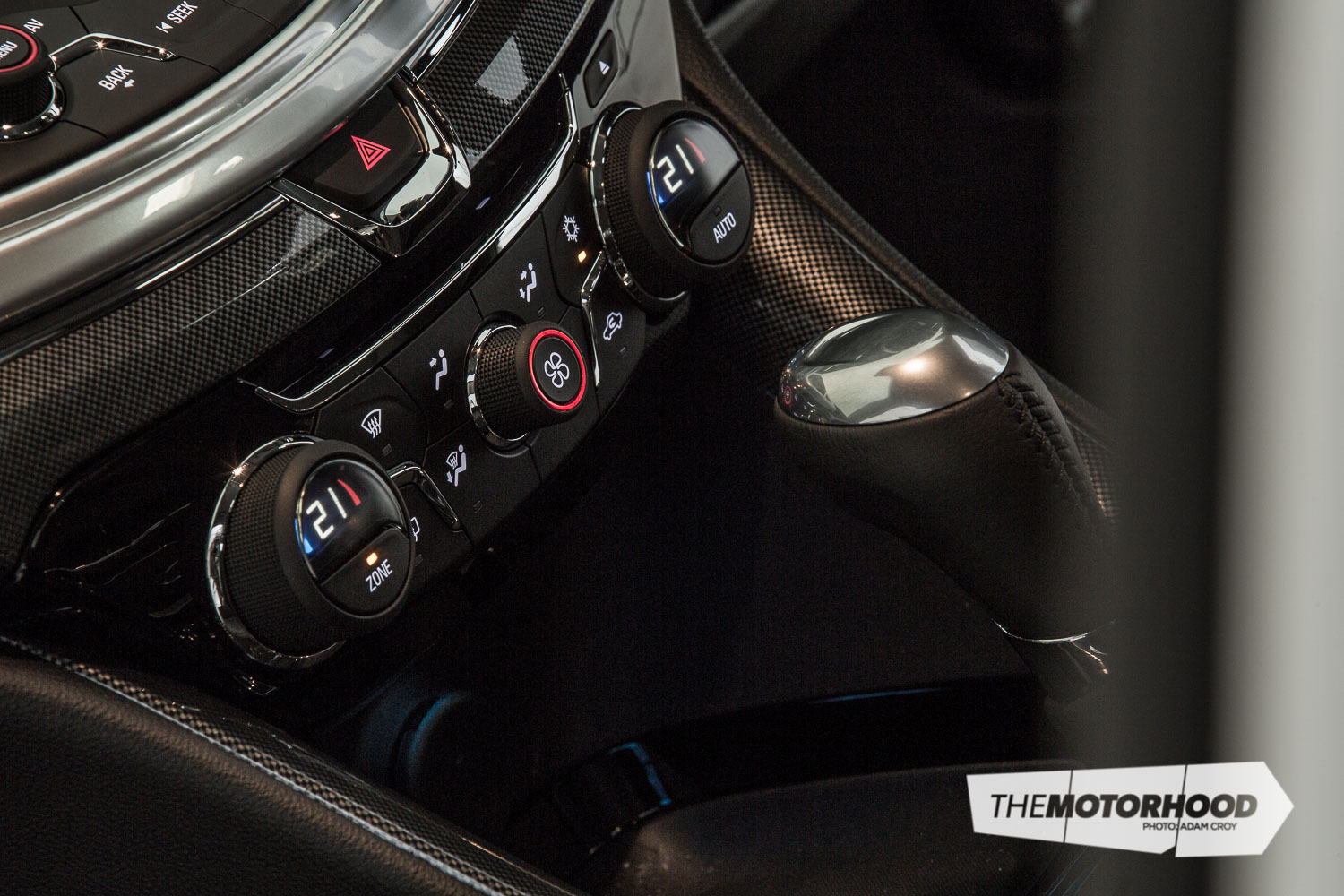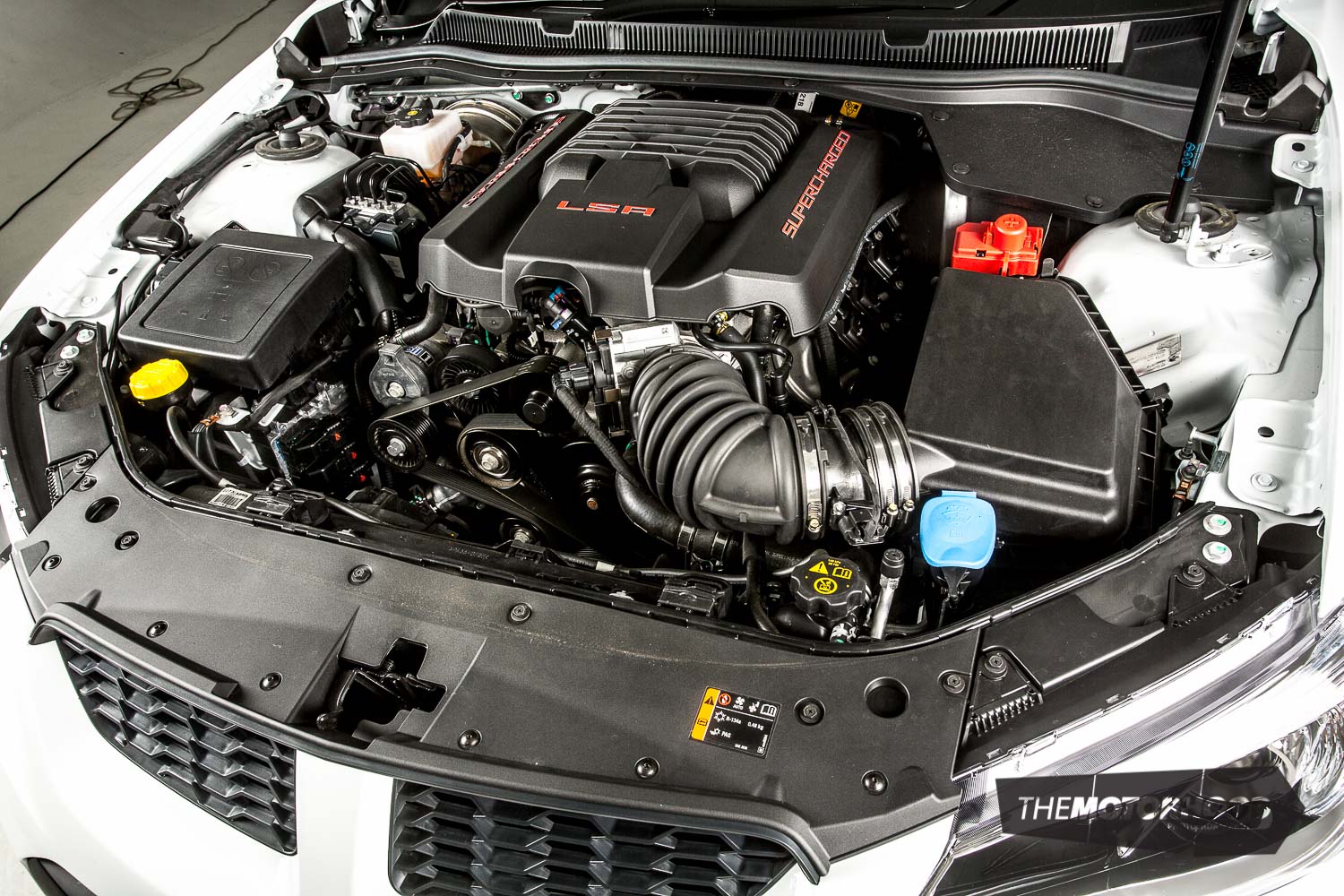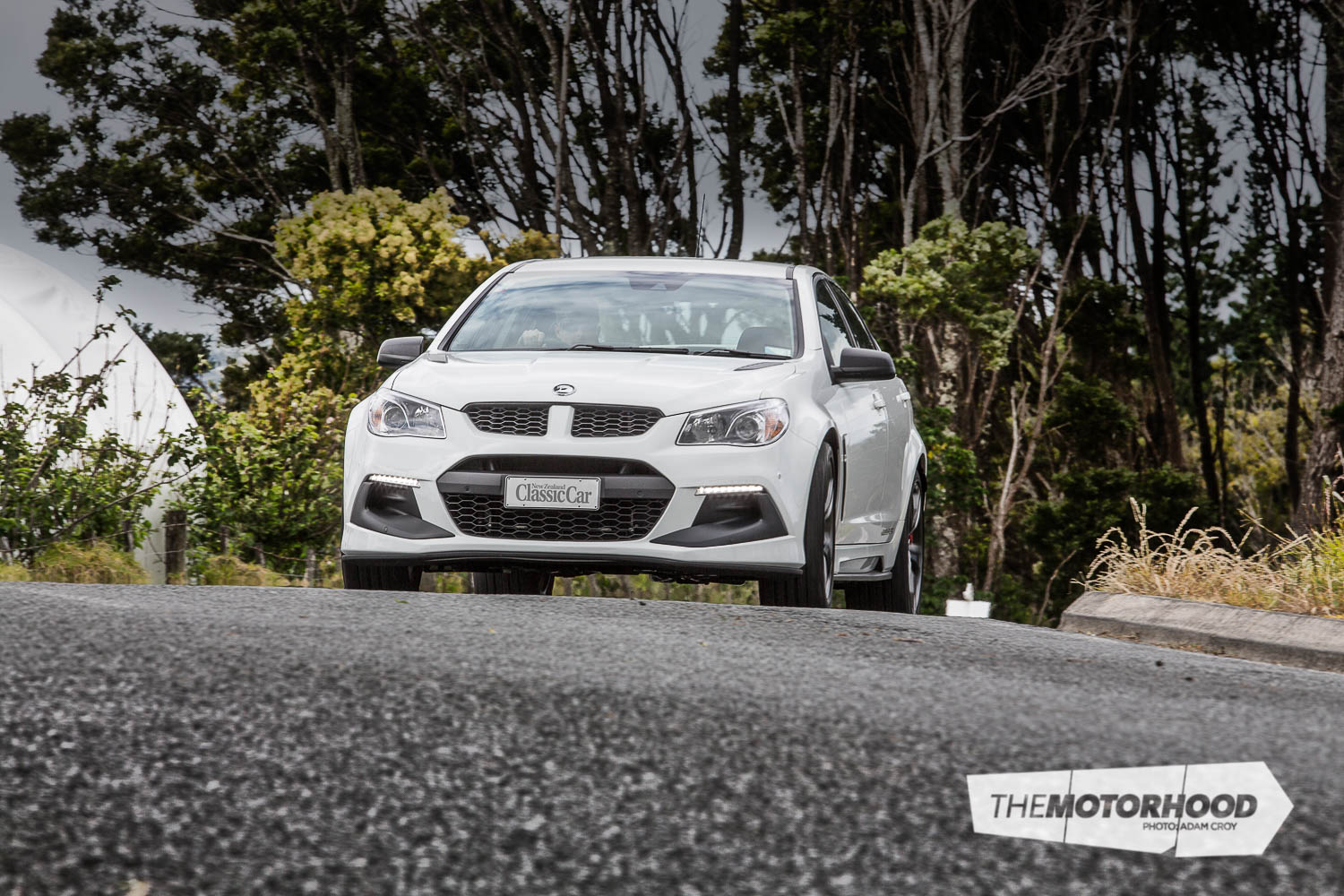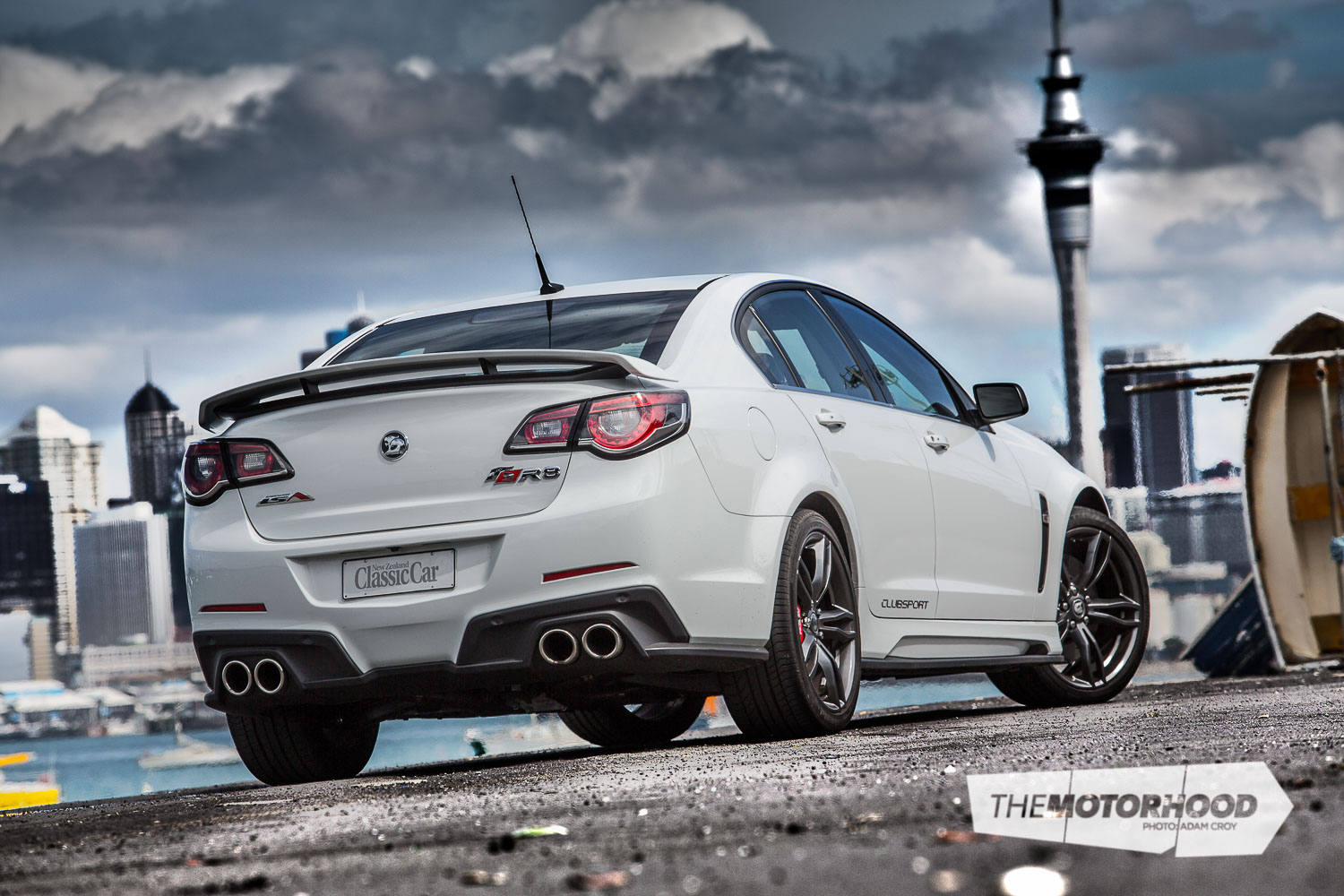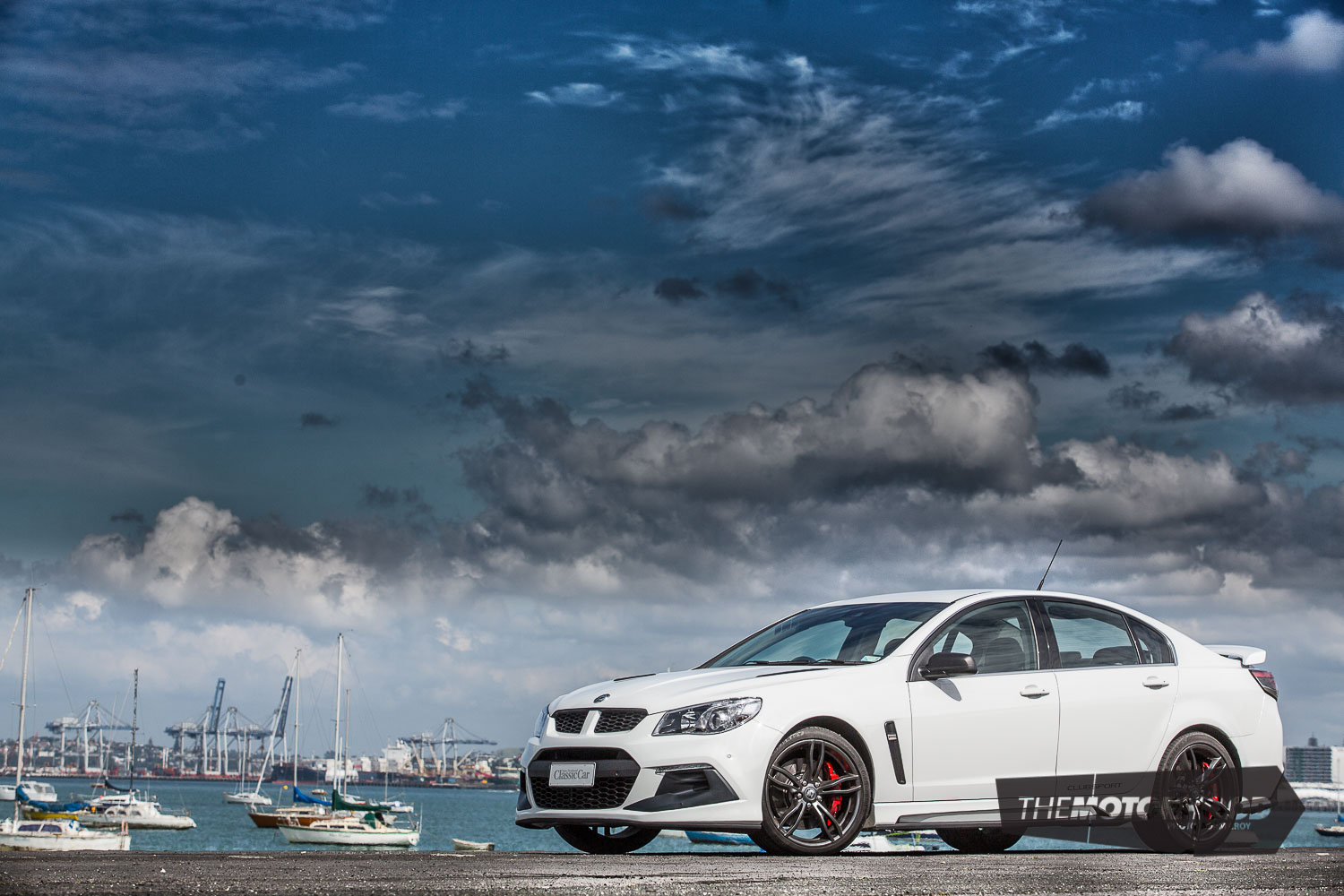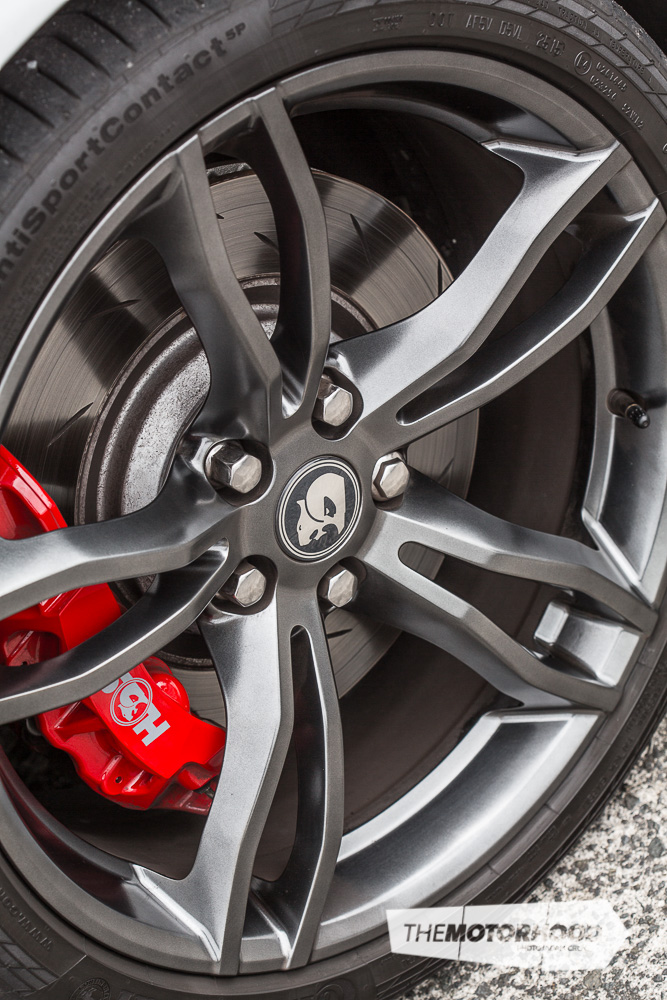It’s hard to write something about the Holden Special Vehicles (HSV) range that’s not been said before. Terms like ‘bang for buck’, ‘value for money’, and ‘mind-warping performance’ all come to mind, and all are accurate. But with each and every successive generation that rolls off its production line — hand produced, just FYI — HSV seems to keep raising the bar.
The release of the Holden Commodore VFII platform gave the technical wizards at HSV even more toys to play with, and a higher level from which they could step up their game. Included in the new factory features are paddle shifters, functional bonnet vents, and remote start. But while these items are cool on a normal vehicle, on something as well specced as the HSV Gen F2 Clubsport LSA R8, they almost go unnoticed — this is far from being a ‘normal’ car.

Rampant ponies
While the name is a mouthful, those with any appreciation for General Motors’ engines will smile at the sight of the letters ‘LSA’. The LSA is the motor that HSV bestowed on the last-generation HSV GTS, and it’s an engine with which we instantly fell in love. With a 1.9-litre supercharger up top and a forged bottom end, the GTS-spec LSAs are rated at 430kW, and the LSA R8 drops that figure to 400kW, which is still nothing to be sneezed at.
While HSV claims the lower power is partially due to the loss of the GTS’s bimodal intake, we’re prepared to guess that it is due to the tune more than anything else — meaning that, if you so desire, a quick hack into the car’s engine control unit (ECU) might well see you reach near-GTS power levels.
The thing is, though, that, when you drive the LSA R8, you simply don’t need it; there is more than enough power on tap.
Like the GTS, the LSA is far more refined than the raw sledgehammer that you’d expect it to be with that many rampant ponies running around inside the 6.2-litre engine under the hood. Helping out in this area is the full GTS-spec driveline, including the incredibly smooth 6L90E six-speed transmission, and the uprated diff with 3.23:1 final-drive ratio (3.73:1 in manual vehicles).
This driveline gives the confidence to turn the driver preference dial behind the shifter into Sport or Performance mode and really push the car, with no fear of the massive 671Nm of torque doing any damage.

Impressive package
With a twist of the dial, the electric power steering becomes noticeably heavier, and the bimodal exhaust goes from barely audible to the roar you’d expect from such a mechanical monster. While we appreciate the addition of the paddle shifters, when it comes time for the twisty bits, you’re so busy trying to focus your eyes at the next corner that adding shifting into the mix is only adding difficulty for yourself. Regardless of how good a driver you are, you’ll never be able to shift more quickly than the computer can, so you’re only fooling yourself, but at least you’re having fun while doing so.
With the upgrade in power over previous-generation R8s comes a bigger brake set-up, with four-piston calipers all round. While they’re not the six-pots of the GTS, and the car loses the torque vectoring the GTS offers, the brake set-up is still impressive and has no problem hauling the car up. In fact, we’d say the difference in braking is not noticeable — unless, perhaps, you’re pushing the car to extreme levels.

And that’s the nice thing about the LSA R8: whether you drive it in rush-hour traffic, at 10-tenths on back roads, or even on the track, it’s more than accommodating and capable. In fact, we’d go as far as saying it’s easy. From the simple things like the keyless entry to the push-button start; the reversing camera and sensors; and through to the supportive seats, big brakes, and extreme power, it makes daily driving simple and spirited driving fun. No compromises.
To help keep the purchase price down despite the boosted mechanical package, the LSA R8 has lost a few things that have been standard fare in the R8s of old, such as the Enhanced Driver Interface (EDI) and the console-mounted twin gauges. In reality, neither of these is a huge loss, as after the first five minutes of watching how much G-force you can exert, or glancing at the digital tacho, the novelty of the EDI wears off — unless you take the car to the racetrack, where the built-in lap timer can come in handy, especially as all New Zealand tracks are preprogrammed.
We’re actually quite happy that the gauges have gone, as, given the car’s lack of ignition barrel — it has a push-button start — that creates somewhere for you to put the keys, not to mention another charge point for your electronic devices.

Subtle design
Exterior-wise there’s no denying that the LSA R8 is from the HSV stable, but, even with the new front bumper and side-skirt design, it’s still quite subtle — or, more correctly, the difference between the Gen F and Gen F2 is subtle.
To allow for the LSA’s additional cooling requirements, the frontal area has been opened up more, and additional brake cooling ducts are now found each side, along with new daytime running lamps. The black finish of the ducts ties in perfectly with the black lower front splitter and lower side sills, which flow into the rear bumper, making for a very cohesive look.
The ‘Hyperflow’ rear spoiler, which is an exclusive option available only on the LSA R8 (at a cost of $895, and fitted to our test vehicle) does tend to block a bit of rearward vision, but certainly not enough to complain about. If you are worried, there is the option to leave the car with the stock Lo-line spoiler. Likewise, you can spec the EDI ($1195), among myriad other options.

We’d take the car just as is, without any upgrades, as it’s that good. In stock guise, it’ll set you back $102,490 (auto) or $99,990 (manual) — $17,500 less than the GTS, a decent saving for what most would consider not much difference in vehicle.
So, if you’re in the market for a corner-carving powerhouse that can offer you unlawful amounts of fun, can drop the kids to school in comfort, and can pick up the groceries with ease, don’t drive the GTS, as you’ll be blown away by the LSA R8. Try out the GTS and you’ll want one, of course, so do so at your own peril!
2015 HSV Clubsport LSA R8
- Engine: Supercharged LSA Generation IV Alloy V8
- Capacity: 6.2-litre
- Max power: 400kW at 6150rpm
- Max torque: 671Nm at 4200rpm
- Fuel system: Electronic returnless
- Transmission: Six-speed auto with Active Select and paddle shifters
- Suspension F/R: MacPherson-strut, direct-acting stabilizer bar, linear-rate coil springs/ Multi-link independent rear, linear rate coil springs
- Steering: Electric power
- Brakes F/R: 367mm ventilated-disc with forged four-piston calipers / 372mm ventilated-disc with forged four-piston calipers
- Wheels/tyres: Forged alloy / ContiSportContact 5P
Dimensions:
- Overall length: 4991mm
- Width: 1899mm
- Height: 1453mm
- Wheelbase: 2915mm
- Track F/R: 1616mm/1590mm
- Kerb weight: 1907kg
Performance:
- Max speed: 250kph limited
- 0–100kph: 4.6 seconds
- Standing quarter-mile: 12.7 seconds
This article originally appeared in the March 2016 issue of New Zealand Classic Car (Issue No. 303). You can pick up a print copy or a digital copy of the magazine below:







